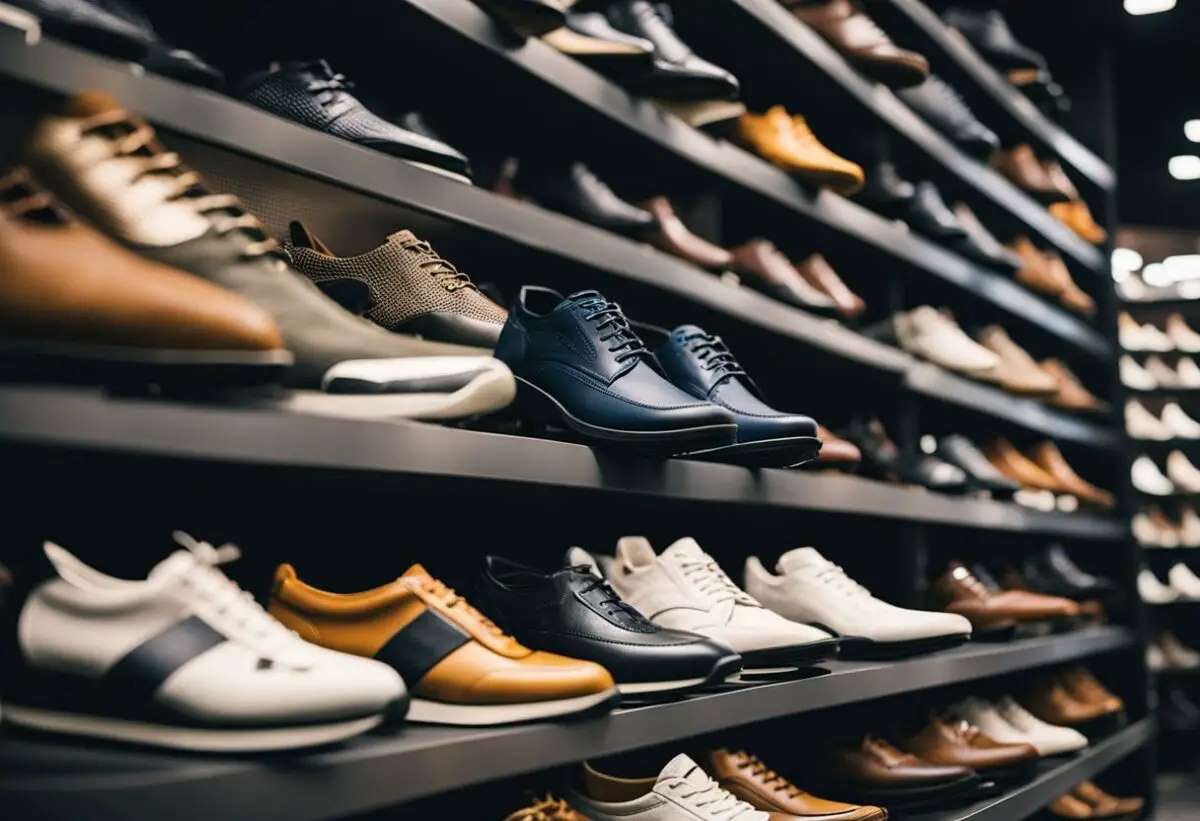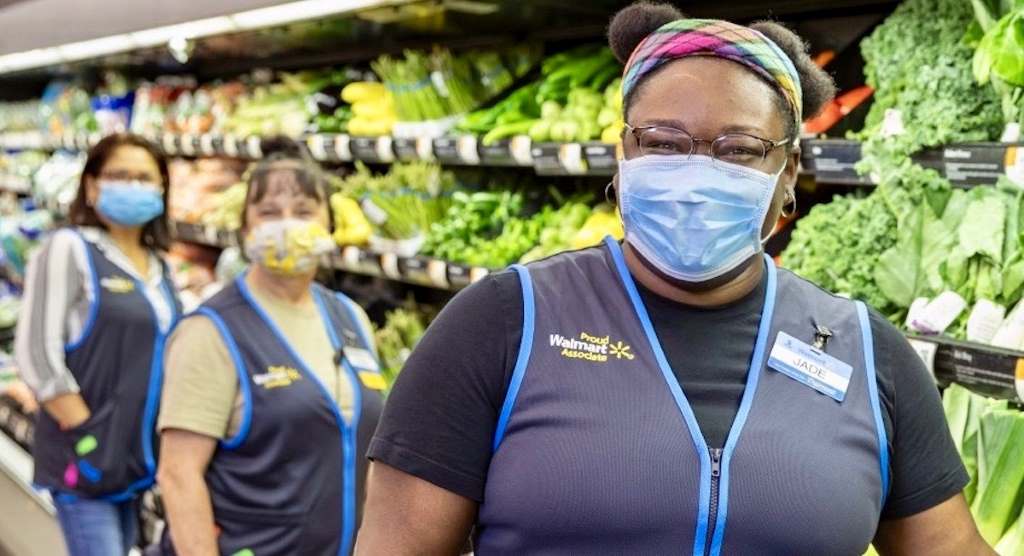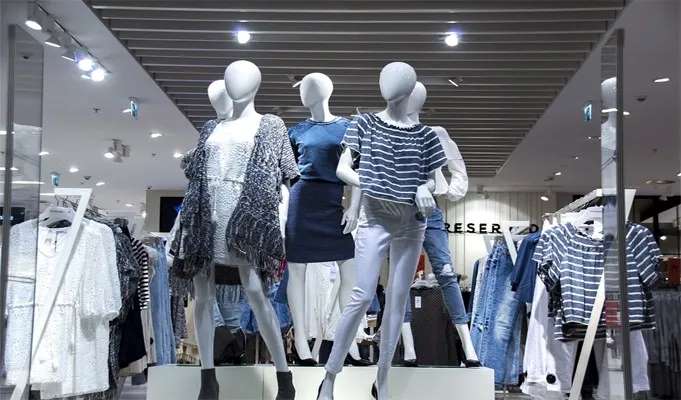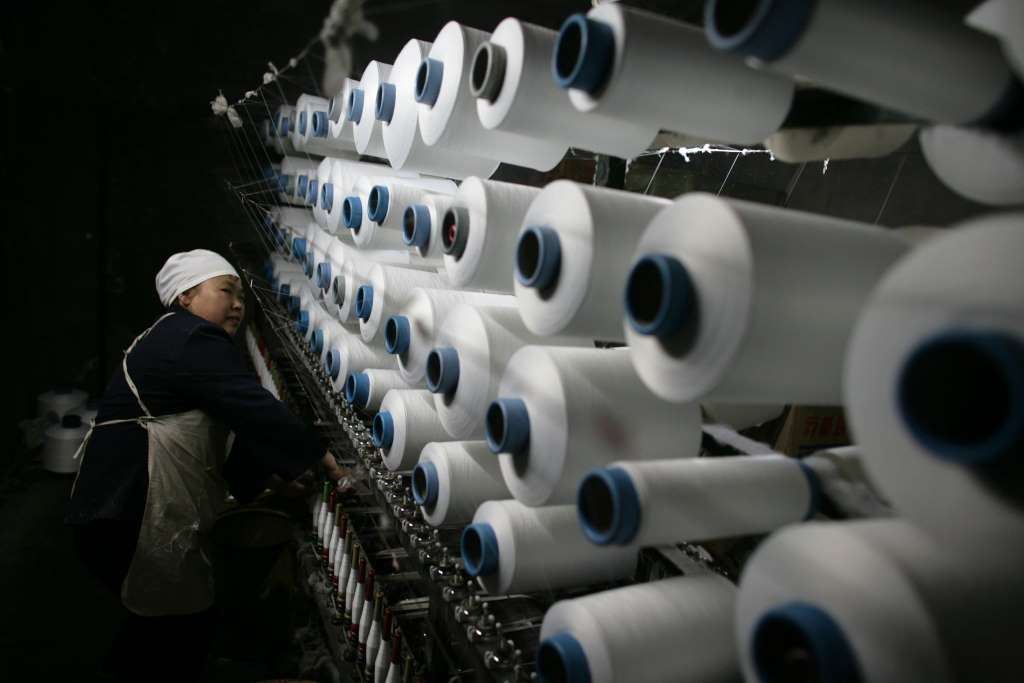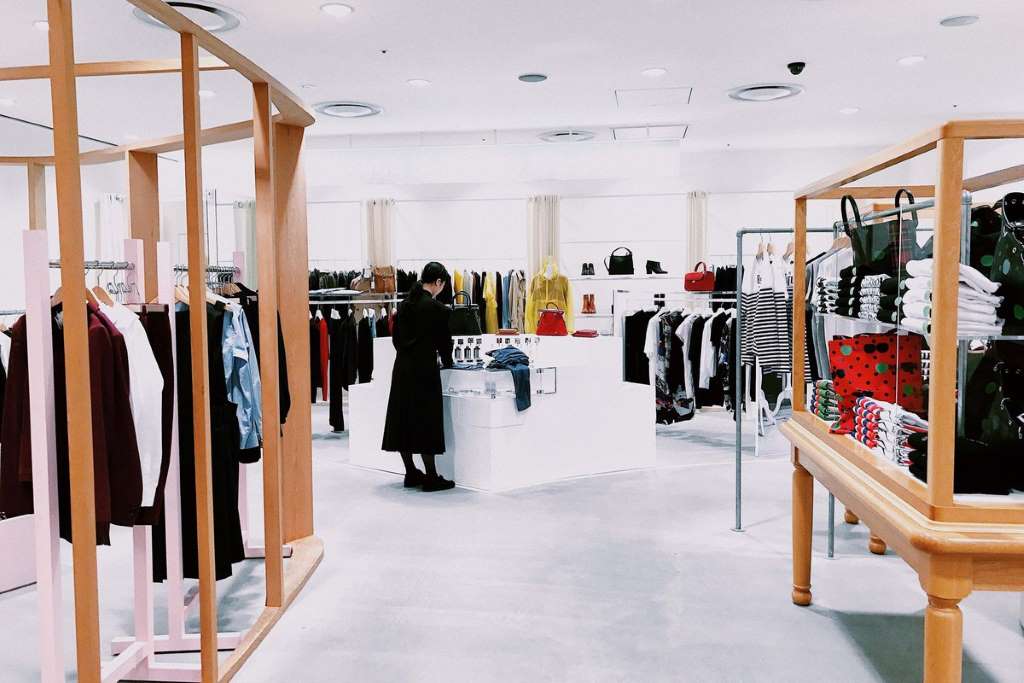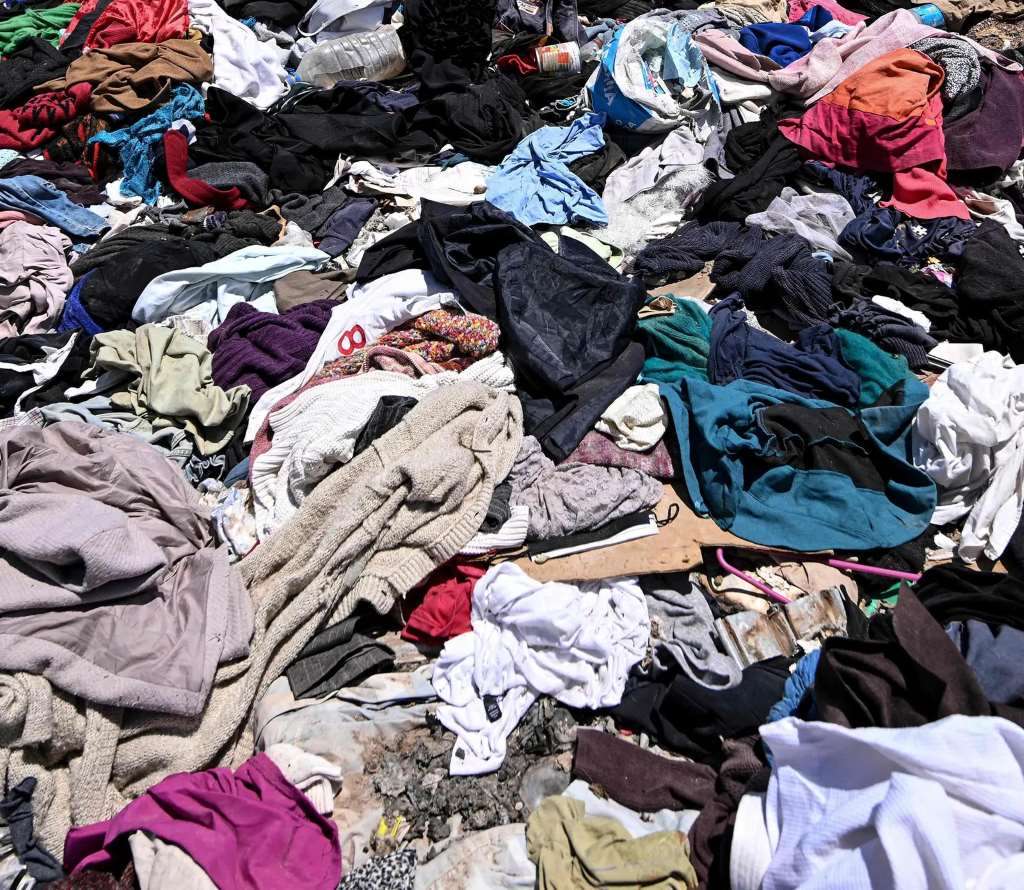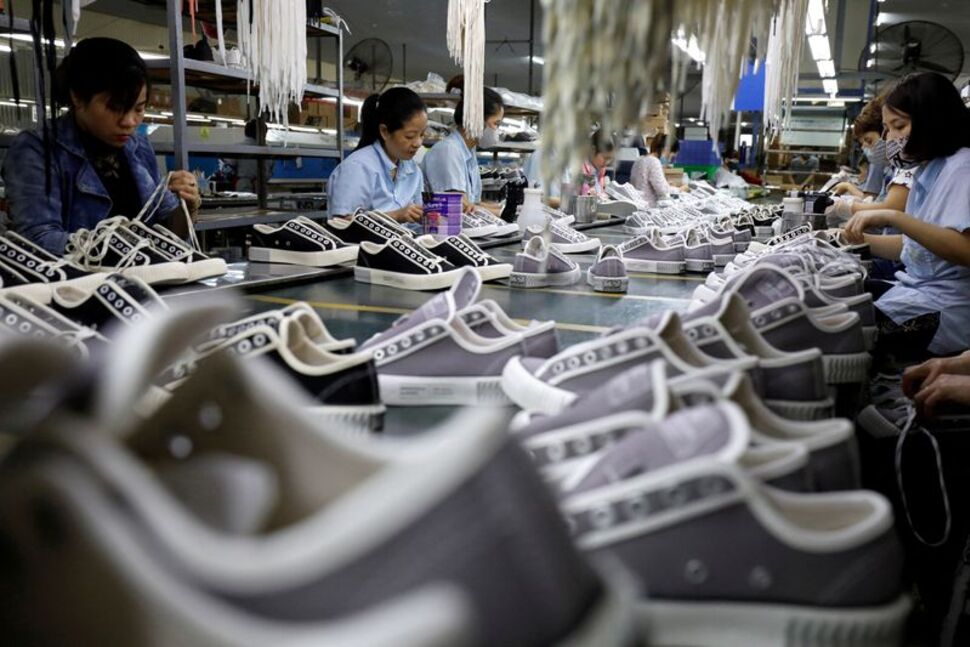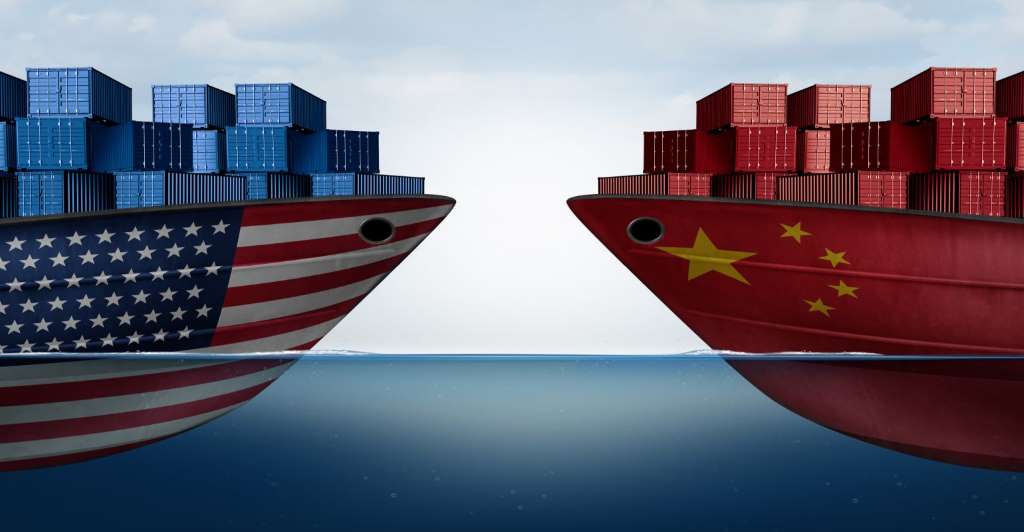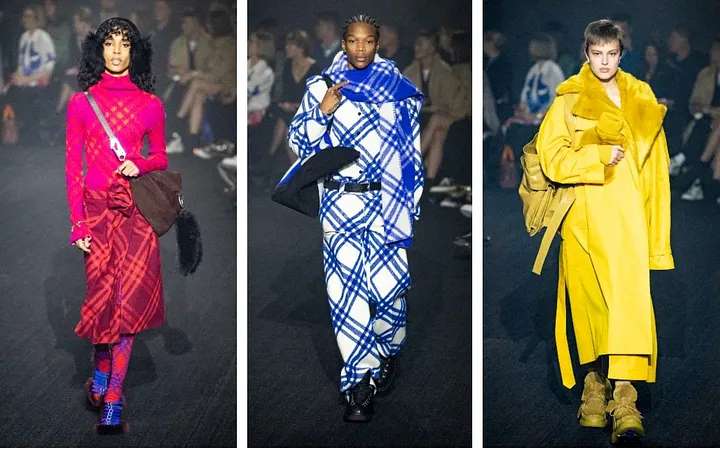FW
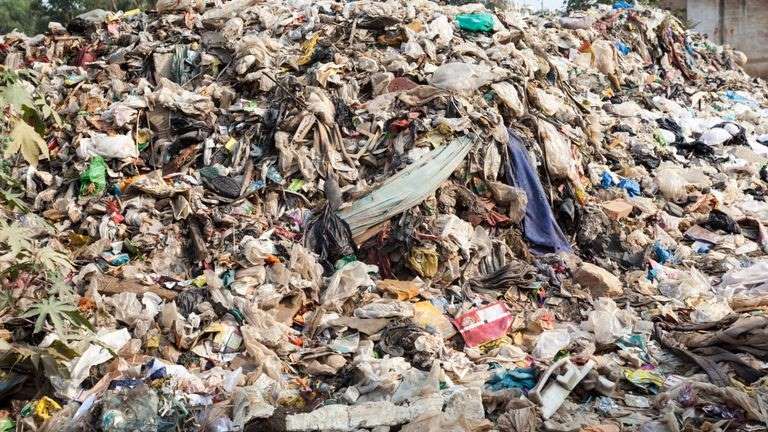
Despite growing awareness of sustainable fashion, a new report by WRAP, a leading climate action NGO, reveals that nearly half of all used clothes in the UK still end up in general waste bins.
The report, titled ‘Textiles Market Situation Report 2024’, highlights that in 2022, out of the 1.45 million tons of used textiles generated in the UK, a staggering 421,600 tons were discarded in household bins. This translates to an average of 35 unwanted garments thrown away per person every year.
Clogging landfills
While some of this discarded clothing gets incinerated with energy recovery, a significant portion, around 11 per cent, ends up in landfills. This trend is particularly concerning as it highlights a missed opportunity for reuse and recycling within the textile industry.
The report also points to a decline in the value of donated textiles. Between 2013 and 2023, the price per tonne for donations to textile banks and charity shops has dropped by 57.5 per cent and 41 per cent respectively (not accounting for inflation). This suggests a potential saturation in the second-hand clothing market, calling for innovative solutions to manage textile waste.
“The report's findings highlight the need for a more comprehensive approach to used clothing," says a spokesperson for WRAP. "Encouraging consumers to buy less, buy better quality, and extend the life of their clothes are crucial steps. Additionally, supporting businesses that prioritize reuse and recycling can create a more circular textile system."
With increasing consumer awareness and industry action, the textile industry has the potential to move towards a more sustainable future. However, as the WRAP report suggests, there's still a long way to go before we stop throwing away clothes like yesterday's news.
The report underscores the need for a multi-pronged approach to achieve a more circular textiles system. This could involve encouraging consumers to buy less clothing and invest in higher quality pieces that last longer. Additionally, it highlights the importance of innovation in textile recycling technologies and exploring possibilities for Extended Producer Responsibility (EPR) schemes, where brands are held financially accountable for the end-of-life management of their products.
“The WRAP report serves as a stark reminder of the significant work that remains to be done in creating a sustainable future for clothing," said an industry expert. "By addressing these challenges, we can move towards a more circular economy for textiles, reducing waste and our environmental impact.”
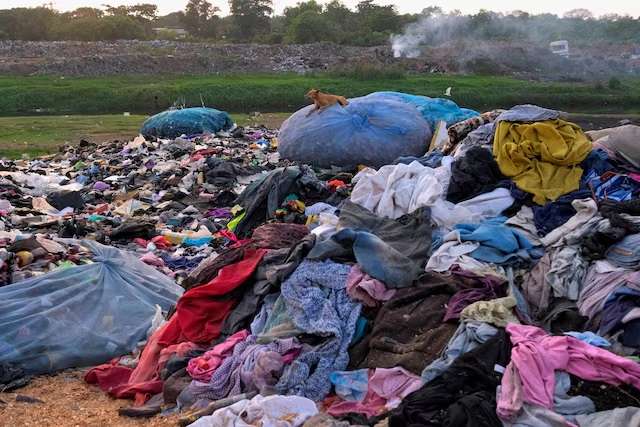
The fashion industry is a major contributor to textile waste, with Europe alone generating 5.2 million tons annually. France is proposing a ban on EU exports of used clothing, aiming to curb this waste and prevent African nations from becoming dumping grounds for unwanted garments. This proposal has sparked a debate, raising questions about its effectiveness, potential consequences, and alternative solutions.
A mounting waste crisis
Fast fashion, characterized by cheap, trendy clothing with a short lifespan, is a key driver of textile waste. The European Union alone generates a staggering 5.2 million tons of clothing and footwear waste annually, according to the European Commission. Much of this ends up in landfills or gets shipped to developing countries, particularly in Africa. A 2023 report by the European Environment Agency found that Europe dumps a whopping 90 per cent of its used clothes in Africa and Asia, raising concerns about pollution and environmental damage.
France's backs responsibility and sustainability
France, backed by Sweden and Denmark, argues that the EU must take responsibility for its waste. Their environment ministry emphasizes the environmental damage caused by overflowing landfills in Africa, stating, "Africa must no longer be the dustbin of fast-fashion." The proposed ban aims to incentivize waste reduction and promote a more sustainable clothing industry within the EU.
However, the effectiveness of a ban is debated. While it might reduce waste in Europe, it could disrupt economies in Africa that rely heavily on the second-hand clothing trade. Opponents argue the ban could potentially harm African livelihoods as millions in Africa rely on the sale of imported used clothing for income. A ban could threaten these jobs. Also, it could stifle domestic industry as some argue cheap used clothing hinders the growth of domestic textile industries in Africa. However, the quality of much of the imported clothing is poor, raising concerns about its overall impact. The ban could also disrupt existing trade agreements. A unilateral EU ban could violate existing trade agreements with African nations. The case of the East African Community's failed attempt to ban used clothing imports due to US pressure highlights this potential issue.
For example, the 2016-2020 trade dispute between the East African Community (EAC) and the US over used clothing imports exemplifies the complexities involved. While the EAC sought to boost domestic manufacturing, US pressure ultimately forced them to abandon the ban. This case demonstrates the potential for unintended consequences and the importance of international cooperation.
Dialogue and comprehensive solutions the way forward
Indeed, a complete ban on used clothing exports might be an oversimplification. Instead, a more comprehensive approach is likely needed. Experts suggest some possibilities:
Promoting sustainable Production: Incentivize European clothing manufacturers to adopt sustainable practices, such as using recycled materials and designing for durability.
Supporting local manufacturing in Africa: Offer technical and financial assistance to help African countries develop their textile industries and create a level playing field with imported goods.
Improve sorting and recycling systems: Invest in better infrastructure to sort and recycle used clothing within the EU, reducing reliance on export.
Global dialogue: An open dialogue between the EU, African nations, and other stakeholders is crucial to find solutions that address environmental concerns while protecting livelihoods and fostering development.
Certainly, the proposed EU ban on used clothing exports highlights the complex relationship between waste management, economic development, and global trade. While a complete ban might be a symbolic gesture, it's unlikely to be the most effective solution. A multi-pronged approach that addresses the root causes of textile waste and promotes a more sustainable clothing industry across the globe is likely a more promising path forward.
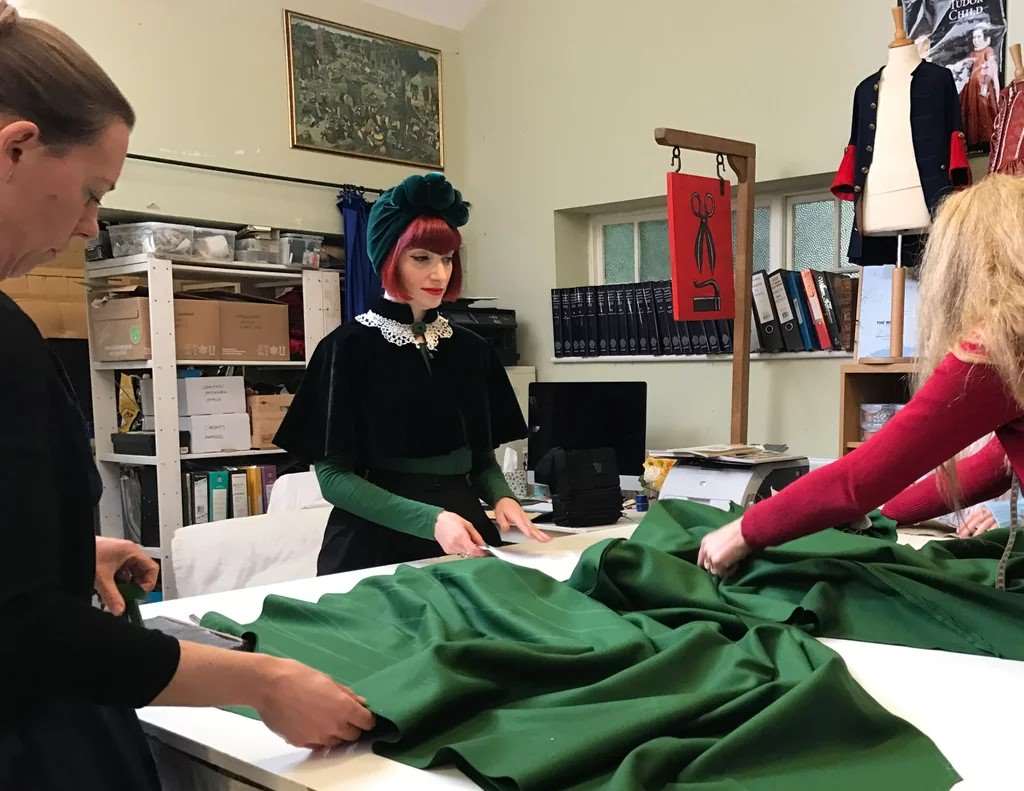
The ‘Made in the USA’ initiative for apparel manufacturing has become a prominent thread in the American consumer landscape. It has gained traction due to several reasons.
One primary objective is to revitalize the American textile and apparel industry, which has seen a significant decline in employment since the North American Free Trade Agreement (NAFTA) in 1994. According to the Bureau of Labor Statistics [BLS], apparel manufacturing jobs in the US dropped from nearly 900,000 in 1990 to around 172,000 in 2022. Also, consumers increasingly value quality and ethical production. ‘Made-in-the-USA’ often signifies higher quality standards and fairer labor practices, fostering trust. A 2020 survey by Cotton Incorporated found 73 per cent of American consumers consider the origin of clothing important, with a willingness to pay more for domestic products. The ‘Made in the USA’ initiative aims to revitalize the American apparel industry, create jobs, and offer ethically produced, high-quality clothing.
Impact on apparel sourcing policy
The initiative hasn't resulted in a complete overhaul of import policies. The US still relies heavily on imports, with data from the National Retail Federation showing apparel imports valued at over $100 billion in 2023. However, there's been a rise in nearshoring, with production shifting to countries like Mexico and Central America. In fact, some brands are cautiously exploring domestic production. Companies like Everlane and American Giant have found success with US manufacturing, often focusing on high-quality, ethically sourced garments. The de minimis provision loophole allows cheap imports to bypass custom duties, giving foreign companies an edge. Perhaps, that is why industry leaders advocate for changes to the de minimis threshold or broader trade barriers to level the playing field.
Then there is the issue of tariffs on certain imported goods imposed under the Trump administration aimed at incentivizing domestic manufacturing. However, these measures also raised concerns about increased consumer costs.
According to the American Apparel & Footwear Association, domestic apparel manufacturing jobs grew by 5 per cent between 2017 and 2022. However, these numbers remain a small fraction of the industry's peak employment levels. The movement has led to a more complex supply chain. Domestic production often involves smaller-scale manufacturers, impacting efficiency and lead times.
Highercosts a possible deterrent
American-made apparel generally comes at a higher price point due to higher labor costs. A 2023 study by Cornell University found that on average, US-made clothing costs 17 per cent more than its imported counterparts. Many brands have struggled with the higher costs associated with US production, highlighting the economic realities of the movement.
Of course, the initiative has had a consumer impact as emotionally, the initiative resonates with consumers seeking ethical and sustainable options. Commercially, the higher costs can be a deterrent. A 2022 McKinsey & Company report suggests that price remains a dominant factor for most American apparel consumers.
Indeed, the ‘Made in the USA’ movement is likely to continue, but with adjustments. Technological advancements like automation could reduce labor costs and make domestic production more competitive. Additionally, consumer preferences for ethical and sustainable clothing could drive further growth. It's unlikely to replace imports entirely, but it offers a valuable alternative for consumers seeking ethically-produced, high-quality clothing. The future success of the movement hinges on balancing consumer preferences, production efficiency, and a commitment to ethical practices.
An established apparel manufacturer and exporter, Shahi Exports has partnered with Taiwan-based synthetic sportswear fabric manufacturer, Little King Global to set up a new processing unit for synthetic fabrics in Shimoga, Karnataka. This collaboration aims to boost employment opportunities in Shimoga's manufacturing sector.
To be fully operational by year-end, the production facility will initially produce 500 tons of synthetic fabrics per month. In future, it aims to double its production capacity to 1,000 tons per month.
Besides being committed to continuous improvement, product development and capacity expansion, the company also aims to make a significant contribution toemployment generation across the country," states Ramalingam T, CEO -Knits Division, Shahi Exports.
Founded in 1974 by Sarla Ahuja, Shahi Exports currently operates three fabric processing mills and over 50 apparel manufacturing facilities across eight states in India, employing over 96,000 people. The company is poised to leverage advanced technologies, cost-effective production, and skilled talent at its Shimoga plant. Once operational, the plant will offer recycled, responsive, and resilient services to customers, says Bruce Liao, Vice-President, Little King Global.
Headquartered in Taiwan, Little King Global Co specialises in the manufacture of synthetic, circular knit fabrics for activewear, outdoor wear, and sports clothing. The company also offers services such as yarn texturising, dyeing, knitting, and post-finishing treatments, including lamination, sublimation printing, and digital printing.
As a part of its efforts of efforts to restructure the company’s European operations, Espirit Europe GmbH and six other German subsidiaries of the fashion group filed for insolvency under self-administration.
This is the company’s second insolvency procedure in the past four years. Espirit laid off approximately one-third of its workshop during the COVID-19 pandemic besides shutting down 100 branch. In March earlier, it had also filed for bankruptcy in Belgium and Switzerland.
The insolvency is likely to direct impact around 1,500. However, the company’s business operations willl continue until further notice.
The group has revealed that a financial investor has shown interest in acquiring significant portions of Esprit's assets. Discussions regarding the acquisition of the brand rights for Europe are reportedly at an advanced stage.
To celebrate the 37th edition of the America’s Cup, Louis Vuitton has introduced a sophisticated nautical-themed capsule collection.
Inspired by yachting motifs, oceanic gear and a blend of sporty chic with cocktail hour elegance, the launch of this unisex collection coincides with the upcoming Louis Vuitton 37th America’s Cup set to be held in late August in Barcelona.
The tournament begins with the qualifying match to challenge the current holder, Emirates Team New Zealand. The five challengers this year include: Orient Express Team, France; Luna Rossa Prada Pirelli, Italy; Alinghi Red Bull Racing, Switzerland; INEOS Britannia, England; and American Magic, New York Yacht Club.
The collection is based on three distinct themes: Riding the Waves, A Day on the Deck, and Elegant Summer Evening. The range based on the theme, ‘Riding the Waves,’ features technical skipper windbreakers and shorts, waterproof canvas keep-all bags and a water-repellent sailor sling in Monogram Storm for women. Central to this theme is the LV Rush sneaker, designed by Vuitton’s creative director Nicolas Ghesquière for the cruise 2024 collection, and Barracuda sneakers in white with a red and black V logo for men.
The range titled, ‘A Day on the Deck,’ includes playful takes on the Damier and Monogram motifs with graphic shirt jackets and reversible rainproofs for men, along with denim shorts and blazers for women.
The third range titled’ Elegant Summer Evening,’ offers chic post-yachting attire with one-strap column dresses held up by leather handles for women, and blazers with gold-finish LV buttons for men.
The collection will be available for purchase starting July 18, with prices ranging from €210 for a tie and €670 for a bucket hat, to €4,500 for a women’s cocktail dress and €5,100 for a men’s blouson with 3D leather detailing.
Primarily featuring red, white, and blue, the collection integrates the America’s Cup logo with a graphic V, originally created by Gaston-Louis Vuitton, the founder’s grandson—perfect attire for Barcelona this fall.
The Louis Vuitton Cup will see challengers racing in 23-m AC75 foiling monohulls with advanced features like wing-like sailing hydrofoils and a soft wingsail. The races will run from Aug 29-early Oct, with the winning challenger facing Team Emirates from Oct 12-27 in a best-of-13 series.
Louis Vuitton has been a key sponsor of the America’s Cup since 1983, the world’s oldest international sporting trophy. This year, Vuitton has elevated its involvement to become a title partner of this prestigious competition. The America’s Cup is notable for having the longest winning streak in history—131 years—after American yachts won the first 23 competitions until the New York Yacht Club was finally defeated by the Royal Perth Yacht Club’s Australia II challenger.
Being held from May 13-17, 2024, in Sydney, the Australian Fashion Week showcased the much-anticipated return of veteran local designers alongside the debut of emerging brands.
Sponsored by Danish jewelry brand Pandora, the event featured around 25 designer shows and a handful of group showcases, unveiling the official Resort 2025 lineup.
The week commenced with luxury brand Albus Lumen's 'Rebellion' collection, which emphasised sustainability by refurbishing old garments into new creations. The collection featured deconstructed garments in earthy tones, contributing to a dystopian theme.
Celebrating its 20th anniversary, founded by Margie Woods, Viktoria & Woods returned to Australian Fashion Week. The brand's co-ed collection, displayed at The Cove Apartments, highlighted tailoring and relaxed silhouettes with fabrics like silk, cupro, linen, and bamboo. This season, the sustainability-focused brand expanded its use of leather in ready-to-wear styles, with standout looks featuring both sleeveless and standard tailoring, as well as specialized knitwear—a nod to the brand's origins.
Carla Zampatti made a poignant return to the AFW after a five-year hiatus, presenting a collection under the creative direction of designer Karlie Ungar. The 'Dinastia' collection paid homage to the brand's classic heritage and female empowerment, introducing elements like bespoke coin jewelry, Italian map prints on silk, and petal-sculpted tailoring and gowns. The show, which opened with a short film by Claudia Rose and a bespoke music score by Gary Sinclair, was a grand tribute to the late designer, featuring predominantly black gowns that exuded a matriarchal essence.
Day two began with indigenous designer Liandra Gaykamangu's summery collection, inspired by bees and native flora and fauna. Rebranding from Liandra Swim to simply Liandra, the designer expanded into ready-to-wear, blending beachwear with streetwear. The collection featured sunset-colored prints, jewel greens, and blues on printed cottons and chiffon, with bikini tops and one-piece bathers layered under versatile clothing.
Bec + Bridge, led by Sydney fashion duo Bec Cooper and Bridget Yorston, took their Resort 2025 collection offsite to Sydney’s Overseas Passenger Terminal. Inspired by metalwork, the collection included wrap dresses, slouched woollen trousers, racerback tanks, and skivvy-style tops, along with denim accented with silver metallic details. The look was completed with silver slouchy knee-high boots, metallic skirts, and 90's oval shades, adding a trendy touch.
The evening of day two saw the return of Acler, with supermodel Gemma Ward and former Australian deputy prime minister Julie Bishop in attendance. Acler's latest collection played with shapes and volume, featuring organza and tulle in saccharine hues, metallics, and intricate beadwork. The brand also introduced a capsule collection of metallic slouch knee-high boots and oversized crescent moon handbags, set against a maze-like white stage that enhanced the collection's galactic feel.
Discontinued in 2018 due to declining sales and viewership, the annual fashion show of American lingerie giant, Victoria's Secret, will be recommenced soon. Launched in 1995, the show had faced criticism for being sexist and out of touch with the #MeToo movement, leading to its cancellation in 2019.
Once a global spectacle watched by millions, the fashion show registered a 6 million drop in American viewership from nine million in 2014 to just three million in 2018. It featured iconic models like Gisele Bundchen, Heidi Klum, and Adriana Lima, who achieved celebrity status as Victoria's Secret "angels." The event also hosted performances by major entertainers such as Taylor Swift, Kanye West, Rihanna, and Bruno Mars.
Originally a part of L Brands, Victoria's Secret was spun off into an independent company in 2021, now trading on the New York Stock Exchange as Victoria's Secret & Co. This entity includes the main lingerie label, the Pink brand targeting young women, and Victoria's Secret Beauty, which offers cosmetics and accessories.
The company faced additional challenges due to its association with Jeffrey Epstein, the disgraced financier who was charged with sexually assaulting underage girls before his suicide in prison in 2019. Epstein had close ties with L Brands' former CEO Leslie Wexner, who had introduced him to the elite circles that included Victoria's Secret fashion shows.
In 2023, Victoria's Secret & Co reported a 2/6 per cent drop in sales to $6.12 billion from the previous year. However, the company’s net income rose to $181 million from $173 million. By the end of the year, the company operated over 1,300 stores worldwide.
After an unsuccessful attempt to make a comeback in 2019, Chanel is gearing up for a grand event in Hong Kong on November 5, 2024. The Parisian luxury label will showcase its 2024-25 cruise collection in the vibrant setting of the Chinese island.
Emphasising on its enduring connection with Hong Kong SAR, Chanel described it as a pivotal gateway to Asia. Notably, this isn't Chanel's first foray into showcasing its cruise collections in China. Last year, the label presented its 2023-24 cruise collection in Shenzhen, following an initial debut in Los Angeles.
Demonstrating the strategic importance of the Chinese market, Chanel has witnessed continuous sales growth in the region. With 13 stores already established in Hong Kong, the label is poised to further strengthen its presence in this lucrative market.
Despite recent challenges stemming from political unrest and the pandemic, Hong Kong has shown resilience. After enduring a prolonged economic downturn, the city began its recovery in 2023, marking a resurgence of high-profile events and international fashion showcases. Notably, luxury brands like Louis Vuitton have already graced Hong Kong with their presence, underscoring its regained status as a premier destination for fashion and culture.
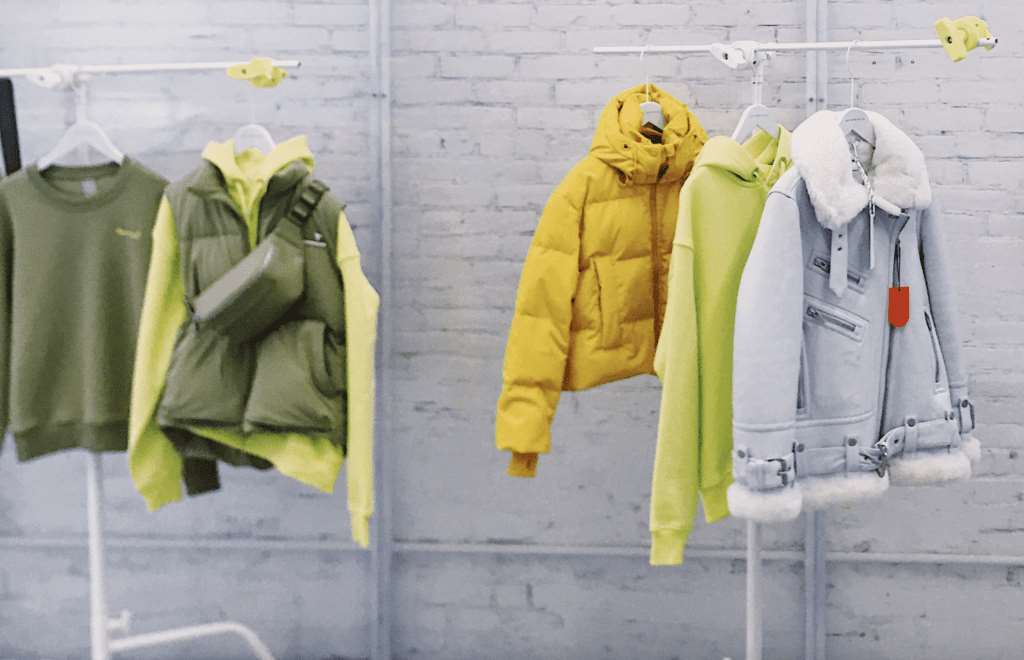
The global fashion industry is going through multiple levels of issues. Struggling sales, overflowing stockpiles, and unsustainable practices are just a few of the issues plaguing major brands. But a new solution is emerging: on-demand manufacturing.
Mass production, mass waste
Traditional fashion relies on made-to-stock, where vast quantities of clothing are produced based on forecasts. This often leads to overproduction, with unsold items ending up in landfills. Unsold items pile up in warehouses, or worse, get incinerated – as in the case of H&M burning 12 tons of clothes annually. This wasteful system also fuels a demand for cheap labor, with garment workers in developing countries facing exploitation. A 2022 study revealed the fashion industry is responsible for a staggering 10 per cent of global greenhouse gas emissions and generates 92 million tons of textile waste annually.
Making only what's needed
On-demand manufacturing flips the script. Clothes are produced only after a customer places an order, eliminating the need for guesswork and reducing waste. This reduces waste, minimizes stockpiles, and allows for smaller production runs. Imagine a world where your T-shirt is made specifically for you, not piled high in a distant warehouse.
However, promising, on-demand isn't without its hurdles. Big brands like Adidas experimented with customization with ‘miAdidas’ but faced challenges like longer wait times and higher costs. Consumers, accustomed to fast fashion's immediacy and affordability, weren't quite ready for the shift. Additionally, existing infrastructure geared towards large batches makes single-unit production impractical.
The rise of smart batches
The answer lies in a middle ground which is: small-batch production. Brands like Alohas and Asphalte are finding success with this approach. They manufacture closer to consumers, in smaller quantities, ensuring the right price and minimal waste. Indeed, small batches produced closer to the consumer, allows quicker turnaround times and competitive prices. This approach aligns with existing manufacturing processes, making it more scalable.
Shifting consumer culture
Tech startups are playing a crucial role. Companies like Unspun (micro-batch 3D weaving), Silana (robotic garment assembly), and Pattern Project (AI-powered production) are revolutionizing the industry. Additive manufacturing (3D printing) promises to minimize waste by creating garments as single pieces, eliminating the need for excess fabric and cutting scraps.
Shifting consumer mindsets is equally important. We need to move away from the fast fashion mentality and appreciate the true cost and value of clothing. Regulations like France's Anti-Waste law are pushing for change, but a deeper cultural shift is necessary.
On-demand manufacturing isn't a one-size-fits-all solution, but it offers optimism about a more sustainable and responsible fashion future. By embracing innovation, educating consumers, and working collaboratively, the industry can finally break free from its wasteful ways.

